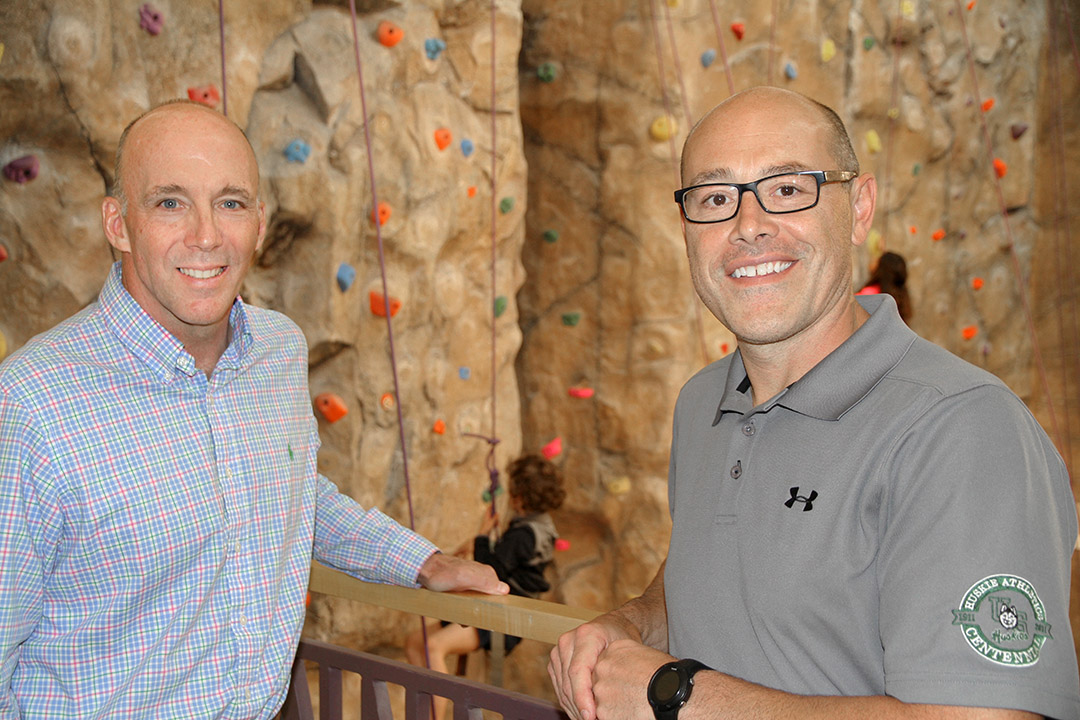
Recreation and participation
Every week, thousands of people put the university’s recreation and fitness facilities to use, taking part in a plethora of programs from personal training and children’s activity camps, to swimming, dance and yoga classes.
By James ShewagaBut Paul Rogal and his Recreation Services team want to ensure that everyone in the city and the region knows that the welcome mat is rolled out for them, in addition to the university’s on-campus community.
“I wonder how many people drive down College Drive every day and don’t know that there is a pool here, and a gymnasium and a Fit Centre, that they are welcome to use,” said Rogal, director of Recreation Services at the University of Saskatchewan. “And every once in a while, a student will come to the PAC (Physical Activity Complex) to write a final exam and say, ‘Wow, this place is cool.’ So, we need to be sure we are communicating that to the community, on and off of campus. We have a huge range of facilities and programs, but we need to do a better job telling people about it.”
While serving students and staff remains a key focus for Recreation Services, the department is determined to develop its community connection and increase the number of children, youth and adults from off campus using the facilities and programs. Year-round swimming lessons and the university’s summer youth activity camps and Huskies Athletics sport camps remain popular, but face increased competition in the city.
“Parents are always looking for ways to keep their kids active and we’ve had good success with most of our registration numbers,” said Cary Primeau, campus recreation co-ordinator. “Our swimming program gets more than 8,000 patrons a year and we get close to 1,300 in our children’s activity camps over the course of eight weeks in the summer. But there’s a lot more competition in the city than there has been in the past, so we are continually trying to hone our experience to meet the needs of people in the community.”
With a triple gymnasium, six-lane Junior Olympic pool, four racquetball/squash courts, a 13,500 square-foot Fitness Centre, 210-metre indoor jogging/walking track, 40-foot climbing wall, a kids’ gymnastics multipurpose room, and a dance studio, the PAC has been the centre of activity at the university since opening in 2003. In addition, the Education Building houses a gymnasium, six-lane pool, squash court and wrestling training area, with six outdoor tennis courts and three grass sports fields adjacent to the building.
At the south end of campus, the Griffiths Stadium football facility is next to four more natural grass fields for competitive and recreational sports including soccer, touch football and ultimate frisbee. The area is also the site of the new Merlis Belsher Place multisport complex opening this fall, featuring two ice surfaces and two basketball practice courts, as well as the state-of-the-art Ron and Jane Graham Sport Science and Health Centre.
“It’s exciting and it will be an incredible opportunity for students to be able to participate in recreation programs in the new facility,” said Rogal. “Minor hockey access to the facility will again create that community on campus connection and I think there will be spinoffs as people come for hockey and then maybe come for swimming lessons next. And I think the Ron and Jane Graham Sport Science and Health Centre is a great opportunity to provide training and support and rehabilitation services not only for elite athletes, but for other members of the community.”
The university’s Human Performance Centre and its team of certified personal trainers currently serves a broad spectrum of clients from recreational athletes to seniors, to police service recruits and elite athletes like Canadian Olympic hockey player Emily Clark. And while the university reaches out to the broader community, serving students on campus remains a priority, through Campus Recreation leagues and activities.
“I think being physically active and being involved in Campus Recreation during the school year is critical for our students,” said Primeau, noting that College of Kinesiology students earn valuable work experience serving as program directors, class instructors and personal trainers. “We provide much-needed breaks from their studies and give students a balance between their academics and activities. It’s not just about being active, it’s about being social, it’s about mental health and it’s about employment opportunities for our students.”
Overall, Rogal said Recreation Services is guided by the university’s commitment to creating a healthy campus culture for all faculty, staff and students.
“One of the things I have been involved in is the university’s overall wellness strategy and a big part of that is the physical piece,” said Rogal. “So, there’s a real need for us to ensure that everyone on campus knows what is available and that we make it as cost-effective and easy to access as possible. And I like the question of where are we going, because we always need to be mindful of our students, faculty and staff, and what they want from us and what changes we need to make moving forward.”

